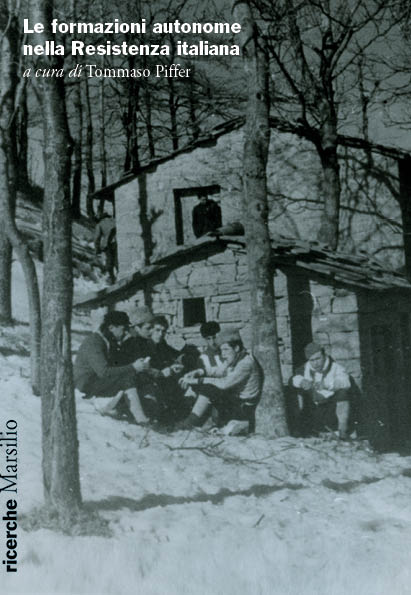Papers
The Green Flames of Brescia: from "the rebel" to the battles of the Mortirolo
Founded in Brescia in 1943, the Fiamme Verdi were a partisan formation of Catholic and popular inspiration operating mainly in eastern Lombardy 1. They took their name from the green insignia in the shape of a stylized flame on the uniform of the Alpini, from which departments came most of the former soldiers of the very first teams 2. Already during the First World War, within the Alpine troops, there had been an assault department with the name Fiamme Verdi, part of the 3rd Italian army corps on the front of the Adamello group 3. From the Alpini the Fiamme Verdi borrowed the organizational and military structure and most of the personalities of the commands. Furthermore, many partisans and patriots who joined the groups, brigades and divisions came from the ranks of this army corps: they were young people in arms before 8 September, draft dodgers of the RSI or veterans of the armir or from the other fronts of the fascist invasion wars 4. 1 This contribution arises from the reworking of materials and texts that make up the backbone of the website of historical interest www.fiammeverdibrescia.it, digital organ of the Fiamme Verdi Association of Brescia. The original texts were composed by Danilo Aprigliano in 2014, with the historical supervision of Rolando Anni and Roberto Tagliani. Those materials formed the basis for Tagliani's speech at the Udine conference on 6 February 2016. On the occasion of the publication of the proceedings, Tagliani selected the materials to be included in this essay, while Aprigliano physically drafted the definitive version, enriching it with the notes accompanying bibliographies. 2 See D. Morelli, The mountain does not sleep. The Green Flames in the upper Valcamonica, Brescia, Morcelliana, 2015 (i ed. 1968), pp. 20 ff. 3 See P. Morisi, Fiamme Verdi. Stormtroopers in the First World War. Adamello-Vallagarina-Monte Pasubio-Monte Grappa-Altopiano dei Sette Comuni, Bassano del Grappa, Itinera Progetti Editore, 2012. 4 See, in particular, The path of freedom. Documents of the Brescian Resistance, edited by R. Tagliani, D. Aprigliano, The Brescian Green Flames: from «the rebel» to the battles of Mortirolo, in The autonomous formations in the Italian Resistance, edited by T. Piffer, Venice, Marsilio, 2020 , pp. 151-167.
The «régalité» in Watriquet de Couvin
The contribution investigates the vision of royalty and the links with the miroir aux princes contemporary in the work of Watriquet de Couvin.
Within this, those texts explicitly dedicated to the education of princes and therefore definable as dits de la régalité.
After an examination dedicated to the pedagogical aspects and the consequent structural dispositions, the contribution proceeds to define the image of the ideal prince as it is revealed by the texts, highlighting the links with contemporary political history.
The last part, on the other hand, is dedicated to an investigation into the possible sources of dits de la régalité.
Books
Guido Artom, Yiddishe Mamma. Fragments of life
Curated by Danilo Aprigliano and Giuditta Grechi
Foreword by Moni Ovadia
Guido Artom, an industrialist known for his entrepreneurial policy particularly attentive to social issues, talks about himself and his family, accompanied on this journey by the figure of his mother whose fresco he has sketched in these pages. "The enterprise was not easy, and it would not have been easy for anyone, because the subject is so vast that it could be reduced to a single word: Love."
Another idea of Lombardy. Speeches in the Regional Council of Mino Martinazzoli (2000-2005)
Foreword by Enrico Letta
Curated by Roberto Tagliani and Danilo Aprigliano
The volume collects the speeches and interventions delivered during the sessions of the Lombard Regional Council by Mino Martinazzoli (1931-2011). In their complex variety, they represent the idea of a Region that accompanied the last direct commitment of the Christian Democrat statesman of Brescia origins. There you can read his passion for the land of Lombardy, the respect and centrality of institutions, the controversy against politicized politics and against the easy shortcuts of regionalist "presidentialism", embodied by the supporters of 'devolution' and the new centralism regional. Edition edited by Roberto Tagliani and Danilo Aprigliano, with a presentation by Enrico Letta and writings by Gianantonio Girelli, Giuseppe Adamoli, Guido Galperti, Roberto Bondio.
Web sites
Green Flames of Brescia
Texts and production by Danilo Aprigliano.
Historical supervision of Rolando Anni and Roberto Tagliani.
The site collects the history and biographies of the Green Flames, partisan brigades born in Brescia in 1943.
Emblem of the Catholic Resistance, the name refers to the green insignia of the Alpini, from whose departments came most of the ex-soldiers who formed the very first teams. It was mainly in eastern Lombardy - in the Valleys, in particular - and in Reggio Emilia that they worked, sinking their roots in social Catholicism, in the Church and in all the ecclesiastical organizations of the place. In these parts, the other formations had a much lesser weight; including those organic to the Communist Party.
The rebel
Site created and edited by Danilo Aprigliano
In 2015, the year of the 70th anniversary of the Liberation, the "Fiamme Verdi" Association (member of the Italian Federation of Volunteers of Freedom) promoted the anastatic reprint of the entire series of "Free Brescia" and "Il rebelle" (1943- 1945), which was distributed in schools and civic libraries, as well as to citizens of Brescia and its province (and beyond), to relaunch the message preserved in those pages, to bring it back to the attention and reflection of the younger generations . Today, with this site, the FF.VV. make available to the general public the anastatic collection in digital format to continue that important work of historical dissemination and memorial of those values for their promotion in today's society, which is the first and fundamental task to which it is called.
Site created by Danilo Aprigliano





